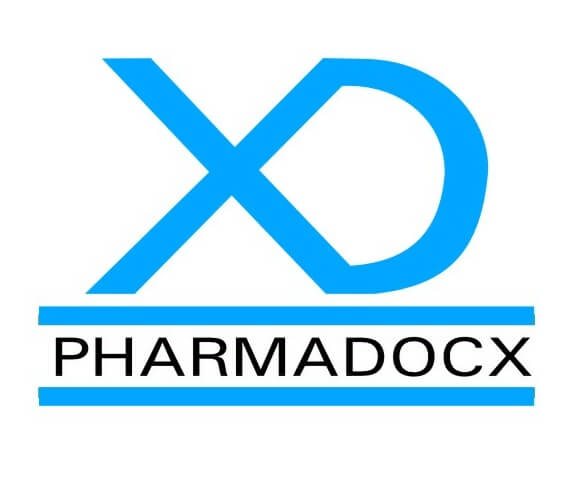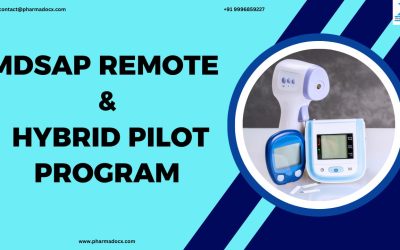Transdermal patches are an evolving technology in the field of drug delivery. They lie at the cross section of drugs and device. These patches are one of the most innovative drug delivery systems in modern healthcare. Transdermal patches are non-invasive and easy to use, thereby making them a popular choice. They are increasingly being used for the treatment of chronic conditions, such as hypertension, nicotine addiction, and diabetes. However, as transdermal patches are a drug-device combination product, regulatory guidelines for these products can be complex. This dual nature product includes both a pharmaceutical drug and a medical device component. Hence, different global regulatory authorities have formulated different and specific regulations for transdermal patches.
What are transdermal patches?
Transdermal patches are adhesive patches designed to deliver therapeutic agents systematically through the skin. They deliver a specific dose of drug through the skin directly into the bloodstream, thereby providing a non-invasive and controlled alternative to oral or injectable medications. Additionally, transdermal patches allow for controlled and steady administration of medications. These patches consist of multiple layers, including a drug reservoir, adhesive layer, backing layer, and a release liner. Research and development are still underway to improve their effectiveness and expand the range of drugs that can be administered through this route. Examples of medications delivered via transdermal patches:
- Smoking cessation: Nicotine patches
- Hormone replacement therapy: Estrogen and testosterone patches
- Motion sickness: Scopolamine patches
- Alzheimer’s disease: Rivastigmine and donepezil patches
- Angina pectoris: Nitroglycerin patches
- ADHD: Methylphenidate and dextroamphetamine patches
As they are increasingly being used for treating chronic conditions, stringent regulations for transdermal patches are in place for ensuring patient safety.
Components of a transdermal patch
A typical transdermal patch generally consists of the following components:
- Backing or support layer: The outermost layer protecting the patch from the environment.
- Drug reservoir: The layer containing the medication.
- Rate-controlling membrane: A semipermeable layer that controls the rate at which the medication is released from the patch.
- Adhesive layer: Secures the patch to the skin and ensures contact between the drug reservoir and the skin surface.
- Release liner: A protective liner that is removed before applying the transdermal patch to the skin.
Types of transdermal patches include
We have listed the three common types of patches.
- Matrix patches: Drug dispersed in adhesive
- Reservoir patches: Drug contained in a separate layer
- Multi-layer patches: Complex release profiles
Advantages of transdermal patches
- Controlled and steady administration: Transdermal patches are designed to deliver the drug at a controlled and constant rate, thereby helping to maintain stable drug levels in the bloodstream. Additionally, it can be used to avoid the peaks and troughs associated with oral medication.
- Non-invasive: Transdermal patches offer a non-invasive and painless way to deliver medication. These patches are especially suitable for patients who have difficulty swallowing pills or are unable to take oral medications.
- Convenience and ease of use: Patients can easily apply and manage patches themselves. Thus, transdermal patches can reduce the need for frequent visits to healthcare professionals for drug administration.
- Bypassing first-pass metabolism: These patches allow medication to be absorbed directly into the bloodstream through the skin. Thus, the digestive system and liver metabolism can be bypassed. Hence, transdermal patches can enhance the drug’s bioavailability and minimize potential side effects associated with oral administration.
- Easy discontinuation: The medication can be easily discontinued by simply removing the patch.
- Reduced dosing frequency: Patches are usually required to be applied once daily or even weekly. This can improve patient adherence to the prescribed medication regimen.
Manufacturing transdermal patches
Transdermal patch manufacturing process is a specialized process involving several key stages. Each stage has to be controlled and monitored to ensure the quality, safety, and efficacy of the final product.
- Mixing: The mixing stage involves combining the active pharmaceutical ingredient (API) with various excipients to create a homogeneous mixture. Proper mixing is required for uniform dosage and consistent drug release. The mixture is applied evenly onto a release liner.
- Coating, drying, and laminating: The mixture is evenly applied on the release liner. Then, the volatile components are evaporated to form the adhesive matrix. After which, the adhesive matrix is joined with a backing film. Notably, controlling the weight and adhesive properties of the matrix at this stage is vital to ensure proper skin adherence and drug delivery.
- Cutting and packaging: The laminated material is then cut into individual patches of the desired size and shape. After which, these patches are individually packaged to maintain sterility and shelf life. A robust quality control system is required to check for correct cutting and hermetic sealing.
Global regulations for transdermal patches
Transdermal patches are a combination product. They include both a pharmaceutical drug and a medical device component, which is the patch system. Strict regulations for transdermal patches are in place for manufacturing these products. The guidelines require various quality control tests to ensure safety, efficacy, and quality of the patches. Additionally, tests assessing active substance crystallization, residual solvents, extractables, adhesive properties, in-vitro release and permeation, and stability have to be performed. Certain regulatory authorities consider transdermal patches a combination product. Hence, both drug and device regulations have to be followed to manufacture the patches in these regulated markets. On the other hand, certain regulatory authorities have formulated specific frameworks for transdermal patches. We have listed some of the top global regulations for transdermal patches.
- FDA: In the US, transdermal patches are considered a combination product and must comply with both drug and device regulations, including cGMP. FDA assigns primary mode of action (PMOA) to these products. The PMOA will determine which center, the CDER (drugs) or CDRH (devices), will review the product. Notably, transdermal patches fall under the purview of CDER because the therapeutic effect is due to the drug. However, they must also meet the 21 CFR Part 820.30 Design Control requirements for the medical device component.
- EU MDR: Depending on the PMOA, in the EU, transdermal patches are regulated under the Medical Device Regulation and Medicinal Products Directive.
- CDSCO: In India, transdermal patches are assessed on a case-by-case basis. Specific regulatory frameworks often involving both drug and device divisions are formulated to regulate and monitor these drug-device crossover products.
Transdermal patch manufacturing: Key regulatory considerations
Transdermal patch manufacturers need to follow a comprehensive approach to regulatory compliance. They should document all the stages and perform quality control as well as stability tests to ensure safety, efficacy, and quality. Moreover, manufacturing transdermal patches requires specialized infrastructure and processes. Additionally, these infrastructure and processes should align with both drug and device regulations. Thus, the transdermal patch manufacturing process should adhere to a complex set of regulations because they are categorized as combination products. Hence, transdermal patch manufacturers should comply with both drug and device regulations set forth by relevant regulatory bodies. Certain regulations for transdermal patches to keep in mind while manufacturing the product:
- Raw material selection: Regulations require adhesives, liners, and backing layers to be biocompatible and non-reactive.
- Clean rooms: Industry standard clean rooms will be required for setting up your transdermal patch manufacturing facility.
- Process validation: Manufacturing process steps, such as coating, drying, and lamination, must be properly validated for consistency.
- Packaging validation: Moisture barrier of the packaging has to be ensured. Additionally, stability testing is crucial for product longevity.
6 top challenges faced while complying with the regulations for transdermal patches
For manufacturing the transdermal patch, you need to comply with two sets of regulatory guidelines: one for drugs and one for devices. We have highlighted the key challenges faced.
- Proper design and development documentation will be required under ISO 13485 for the device component.
- The patch must comply with both GMP guidelines for pharmaceuticals and QMS guidelines for medical devices.
- Skin contact materials are required to pass ISO 10993 tests
- Drug stability and release profile of the patch must be validated.
- Clinical evaluation will be required for new drug-device combinations.
- Proper labelling and tamper resistance of the package has to be ensured. Moreover, clear dosage instructions should be provided.
We at Pharmadocx Consultants provide comprehensive consultation for drug-device combination products, such as transdermal patches. For easily navigating the regulations for transdermal patches, email at [email protected] or call/Whatsapp on 9996859227.





